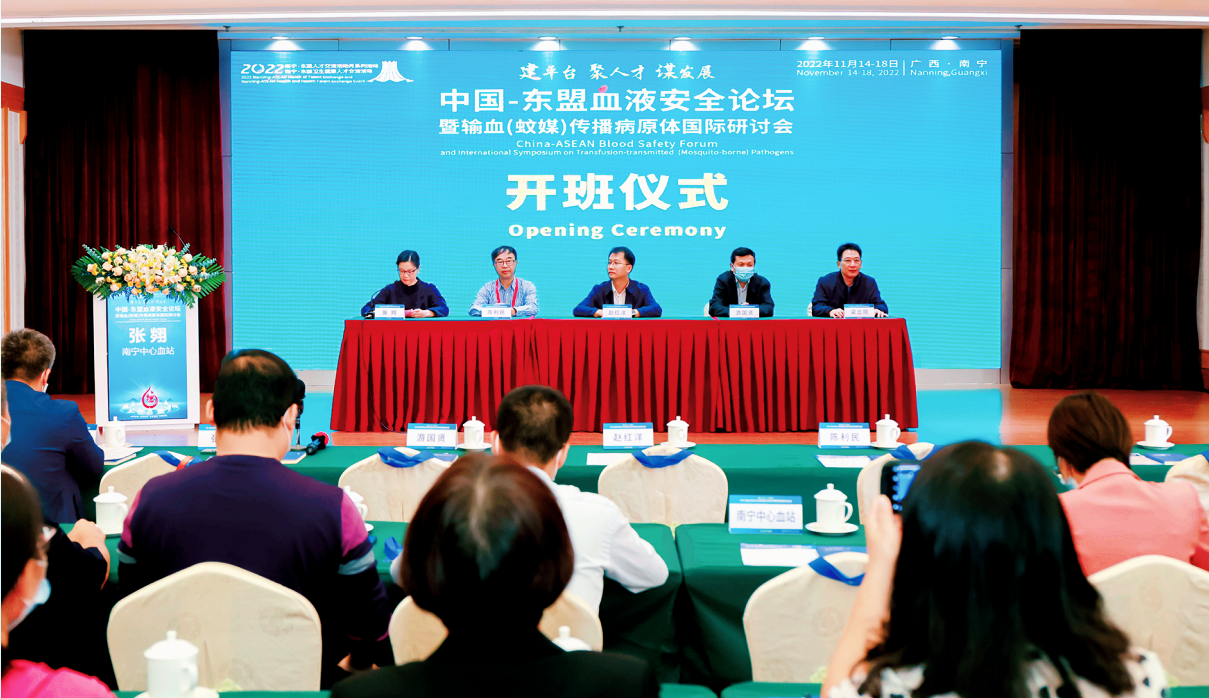From November 14 to 18, 2022, Workshop on Key Technologies for Prevention and Control forВ Emerging andВ Re-emerging Pathogens and Capacity Building for Blood Safety in вҖңthe Belt and Road CountriesвҖқ and ASEAN,В China-ASEAN Blood Safety Forum and International Symposium on Transfusion-transmittedВ (Mosquito-borne) Pathogens, was successfully held in Nanning,В Guangxi.В This forum wasВ mainly hosted by the Department of Human Resources and Social Security of Guangxi ZhuangВ Autonomous Region В and В Nanning Regional Blood Station, and co-organized by the Institute of Blood Transfusion, Chinese Academy of Medical SciencesВ (Peking Union Medical College) , Guangzhou Blood Center, Working Party on Transfusion Transmitted Infectious Diseases of CSBT (CSBT/TTD), and Education Committee of CSBTВ (CSBT/EC). The 5-day forumВ was conducted both onlineВ and offline, inviting experts and scholars from China and other ASEANВ countriesВ to discuss in certainВ academicВ fields, contributing their wisdom and strength to China-ASEAN blood safety cooperation and development.
В
As the first blood establishment hostingВ advanced training program of the National Ministry of Human Resources and Social Security, Nanning Regional Blood Station invited domestic and foreign experts in the fields of transfusion-transmitted diseases and blood safety to present lectures and discussions onВ Overview of Emerging Infectious Diseases, Research on HIV Blood Safety Prevention and Control Based on Molecular Epidemiology, Virus Inactivation Technology and Blood Safety, as well as other cutting-edge theory and technology, current situation and outlook. Experts from the National Blood Centers of Laos and Nepal also participated onlineВ and jointly discussedВ on aspects ofВ blood transfusion safetyВ improvement,В international cooperation and exchangeВ promotion, public health capacity-building, therebyВ enhancingВ the academic level of blood transfusion medicine in ChinaВ and encouraging the clinical research on transfusion-transmitted diseases (pathogens) among blood establishments. According to figures, there wereВ 7,432 peers attending the forum,В among which, 1,102 online participants fromВ LaosВ and Nepal, and nearly 200 offline participants from Guangxi.

Translated by TANG Xinyi;
Reviewed by FENG Chenchen, ZHU Shanshan.